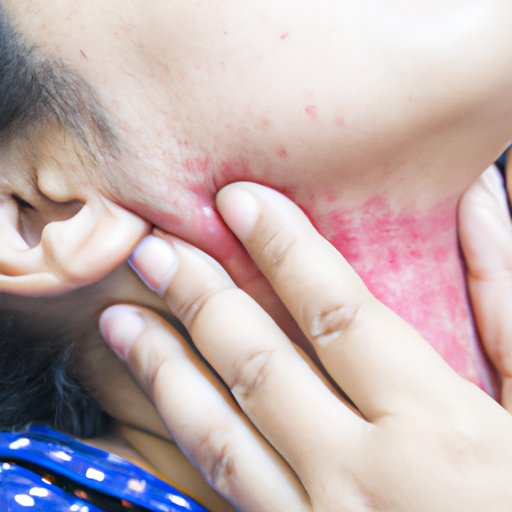
I. Introduction
Fifth Disease or erythema infectiosum is a viral illness that primarily affects children. The classic symptom of Fifth Disease is a ‘slapped-cheek’ rash that spreads to the arms, legs, and trunk. Other symptoms include fever, headache, sore throat, and body aches. Investigating the contagiousness of Fifth Disease is crucial in understanding and preventing its spread.
II. Overview of Fifth Disease Contagiousness
The virus responsible for Fifth Disease is called parvovirus B19. It is spread through respiratory secretions like saliva, mucus, or coughing. Unlike other viruses, parvovirus B19 does not usually cause epidemics. Instead, cases tend to occur sporadically throughout the year. Factors such as the age, immune status, and overall health of the infected person can influence the contagiousness of Fifth Disease.
III. Is Your Child at Risk of Fifth Disease?
Most people who get Fifth Disease are children between the ages of 5 and 15. However, adults can also get the disease, especially if they work with children. Schools and daycare centers are common environments where Fifth Disease spreads. To prevent the spread of Fifth Disease, parents and caregivers should encourage children to practice good hand hygiene, avoid sharing personal items like cups and towels, and stay home if they are sick.
IV. Understanding Fifth Disease Contagiousness
The main source of transmission for Fifth Disease is respiratory secretions from infected individuals. The virus can also be transmitted through blood transfusions and organ transplants. The most common method of diagnosis is through a blood test that detects antibodies to the virus. Fifth Disease is usually contagious for about a week before the rash appears and continues to be contagious until the rash fades away.
V. Fifth Disease Symptoms and Contagion
The initial stage of Fifth Disease typically starts with flu-like symptoms such as fever, headache, and sore throat. The characteristic ‘slapped-cheek’ rash appears a few days later and can spread to the arms, legs, and torso. The rash usually fades away within a week, but in some cases, it can come and go for several weeks. Other symptoms of Fifth Disease and their contagiousness include joint pain and swelling, which can last for months in some cases.
VI. The Truth About Fifth Disease and When to Worry
There is no cure for Fifth Disease, but symptoms can be managed with over-the-counter pain relievers and fluids. Most people recover fully and without complications. However, certain groups of people, such as pregnant women, people with weakened immune systems, or those with chronic anemia, may be at risk for serious complications. If you or your child experience any severe symptoms such as difficulty breathing or swelling of the face or tongue, seek medical care immediately. It is essential to keep a record of Fifth Disease infections as repeat infections can occur, especially in people with weakened immune systems.
VII. Fifth Disease and Contagiousness: Separating Fact from Fiction
There are several myths about Fifth Disease that are not backed by scientific evidence. For example, Fifth Disease does not cause long-term joint pain in everyone who is infected. It is also not a sexually transmitted infection. Healthcare providers suggest that people who are not immune to Fifth Disease should avoid close contact with infected individuals. Additionally, if you are pregnant or have a weakened immune system, seek medical advice if you or a close contact has been exposed to the virus.
VIII. Conclusion
In conclusion, Fifth Disease is a viral illness that primarily affects children but can also occur in adults. The disease is contagious and can be transmitted through respiratory secretions from infected individuals. To prevent the spread of Fifth Disease, practice good hand hygiene, avoid sharing personal items, and stay home if you or your child are sick. While most people recover fully from Fifth Disease without complications, it is essential to seek medical care if you or your child experiences severe symptoms. In addition, keep a record of Fifth Disease infections as repeat infections can occur, especially in people with weakened immune systems.




